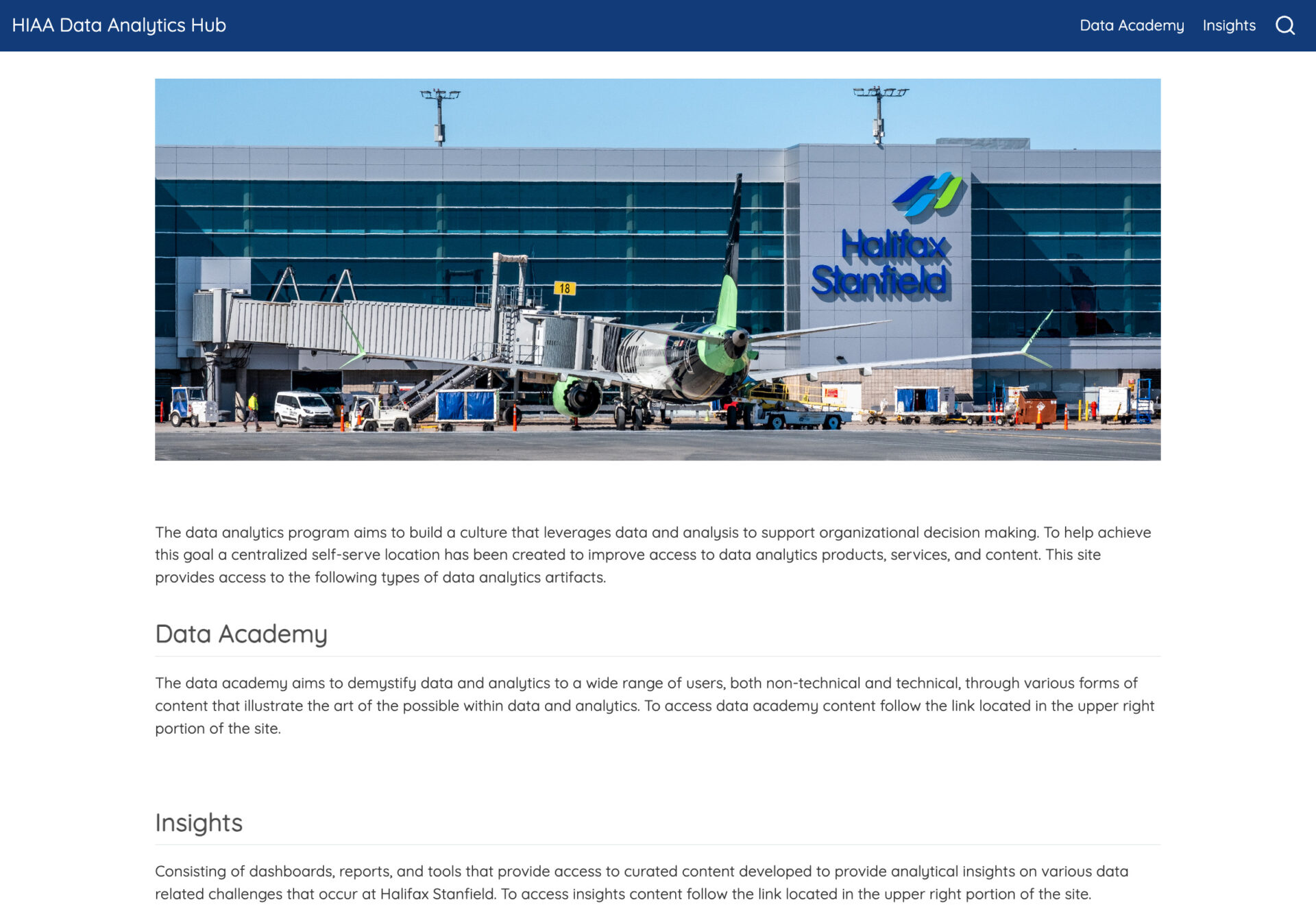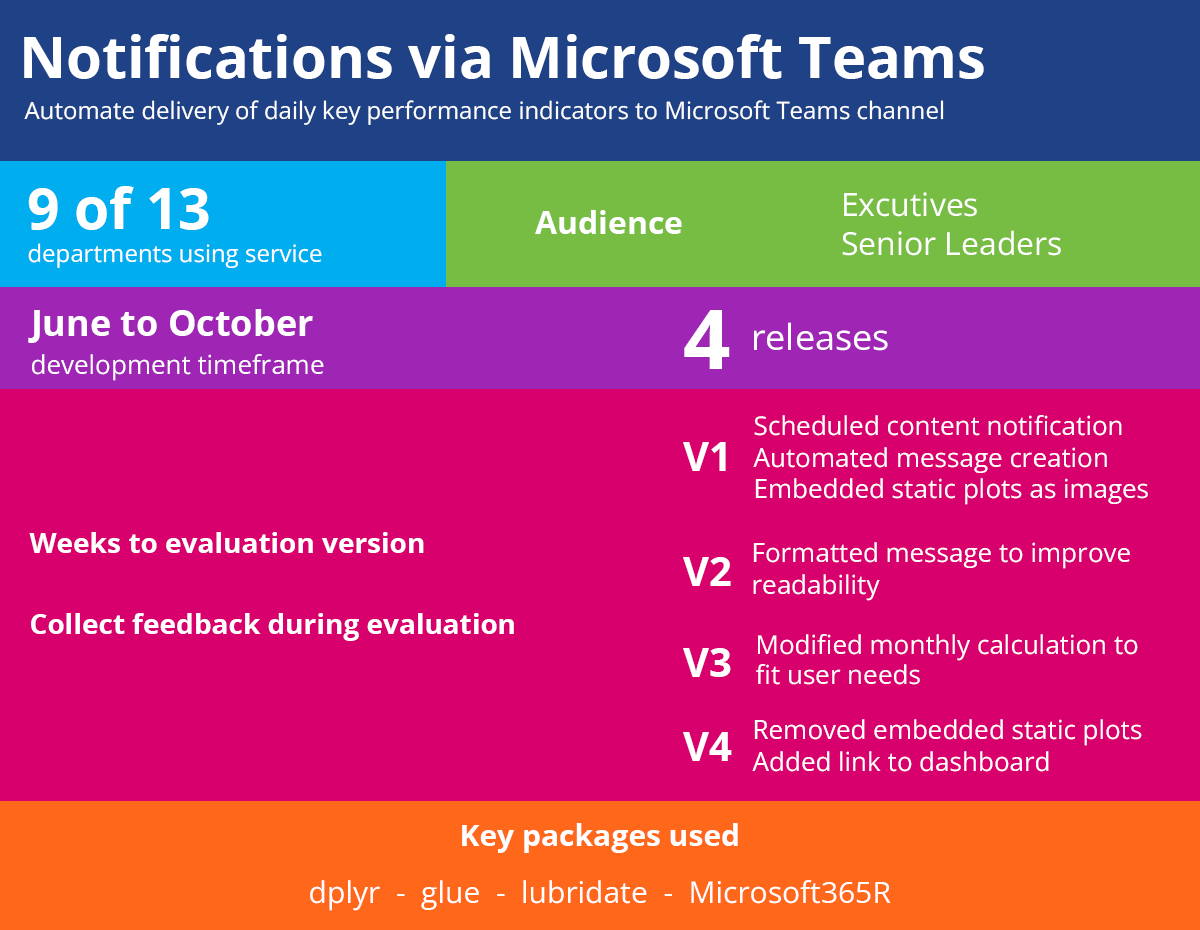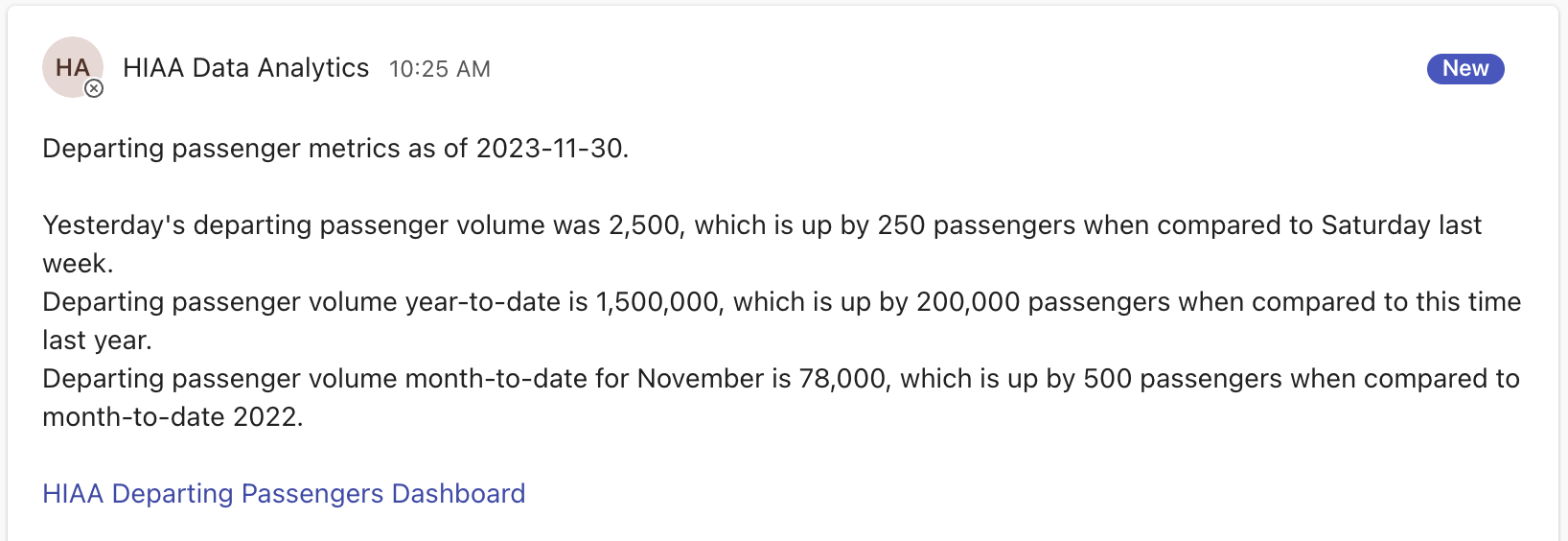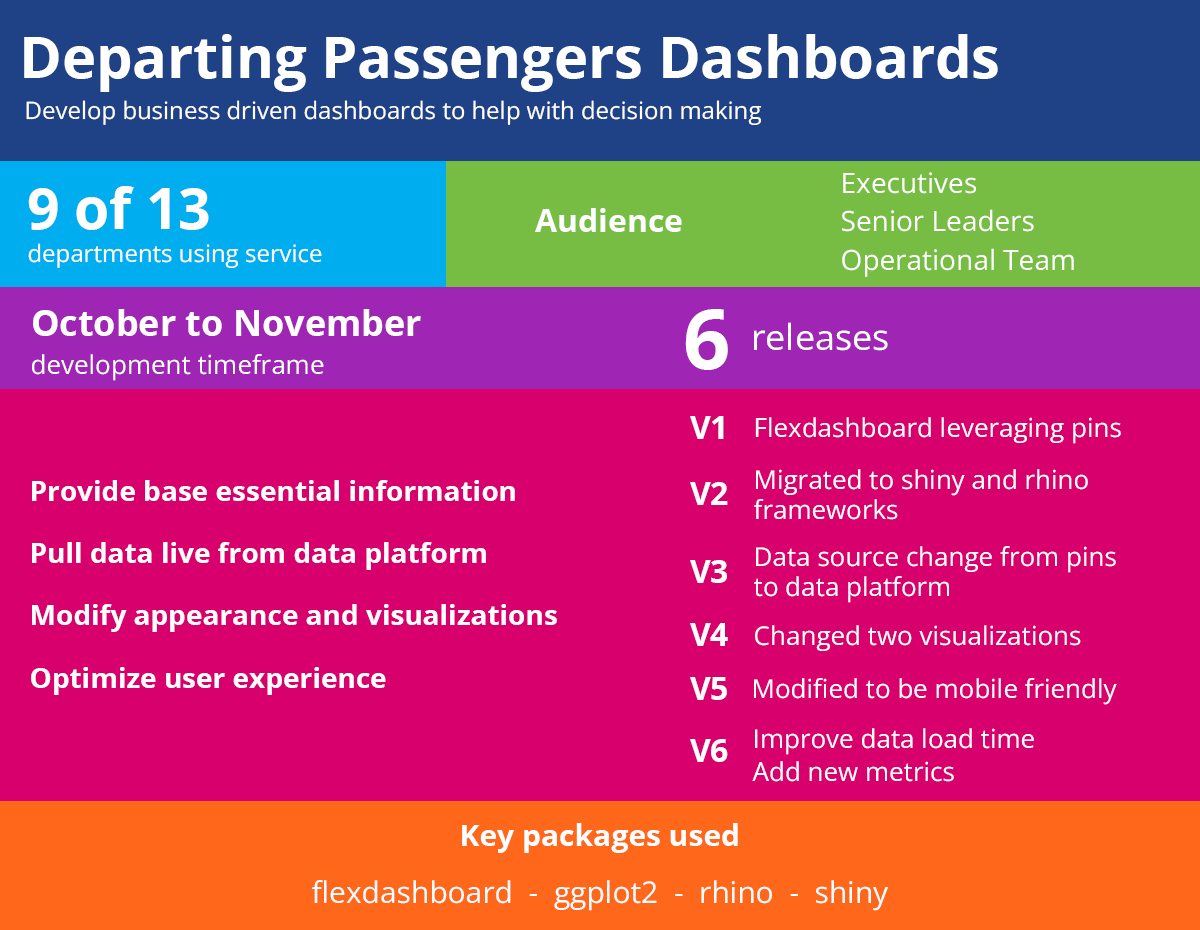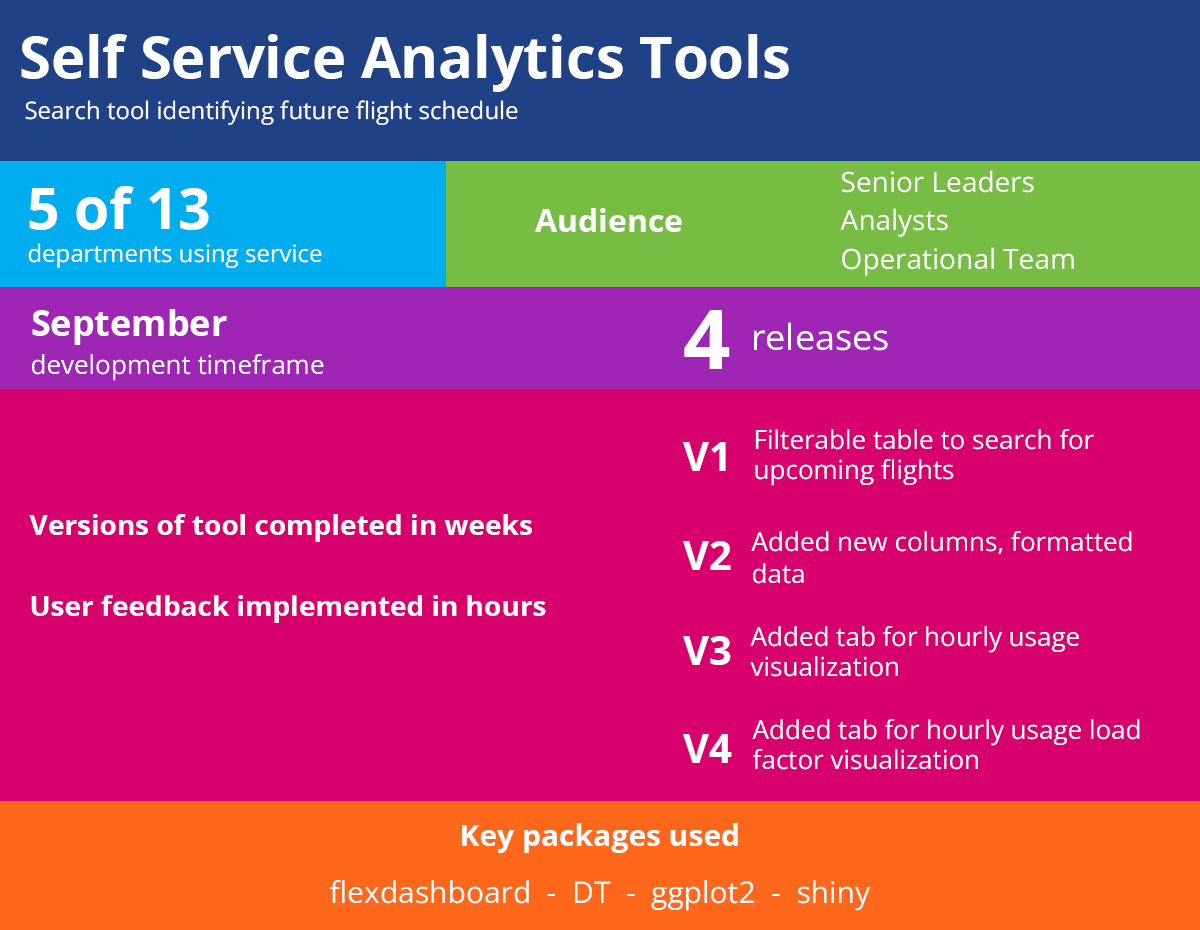Posit Connect has empowered the Halifax International Airport Authority (HIAA) to deliver products following a rapid prototyping methodology, putting versions of a product in the hands of users in days – allowing for actionable feedback and updates that are back to users in hours.
In a few short months after implementing Posit Connect, their team has achieved numerous successes. The range of data-driven content available to users expanded from just two dashboards to include:
- Interactive applications (e.g. flight schedule search)
- Dynamic dashboards (e.g. passenger volume, YHZ Express utilization)
- A knowledge centre focused on data analytics learning materials
Posit Connect, being built with open-source architectures in mind means that we can easily integrate it with our data platform, allowing users to interact with HIAA Data Analytics Hub as a store front for accessing analytical content and data artifacts, opening the door to a wider range of users. This code-first approach, combined with the extensive available R libraries, also allows for integrations with Microsoft Teams, our organization’s internal communication platform.
The changes implemented have quickly produced tangible benefits, including:
- Streamlining processes by eliminating the need to request information from the service centre, saving hours of manual work weekly
- Empowering informed decision-making through enhanced access to relevant data
- Valuable insights into the return on investment (ROI) of new programs and services
- Requests from multiple departments, including Planning and Infrastructure, Operations, Finance, and Customer Experience to develop data analytics products and services



